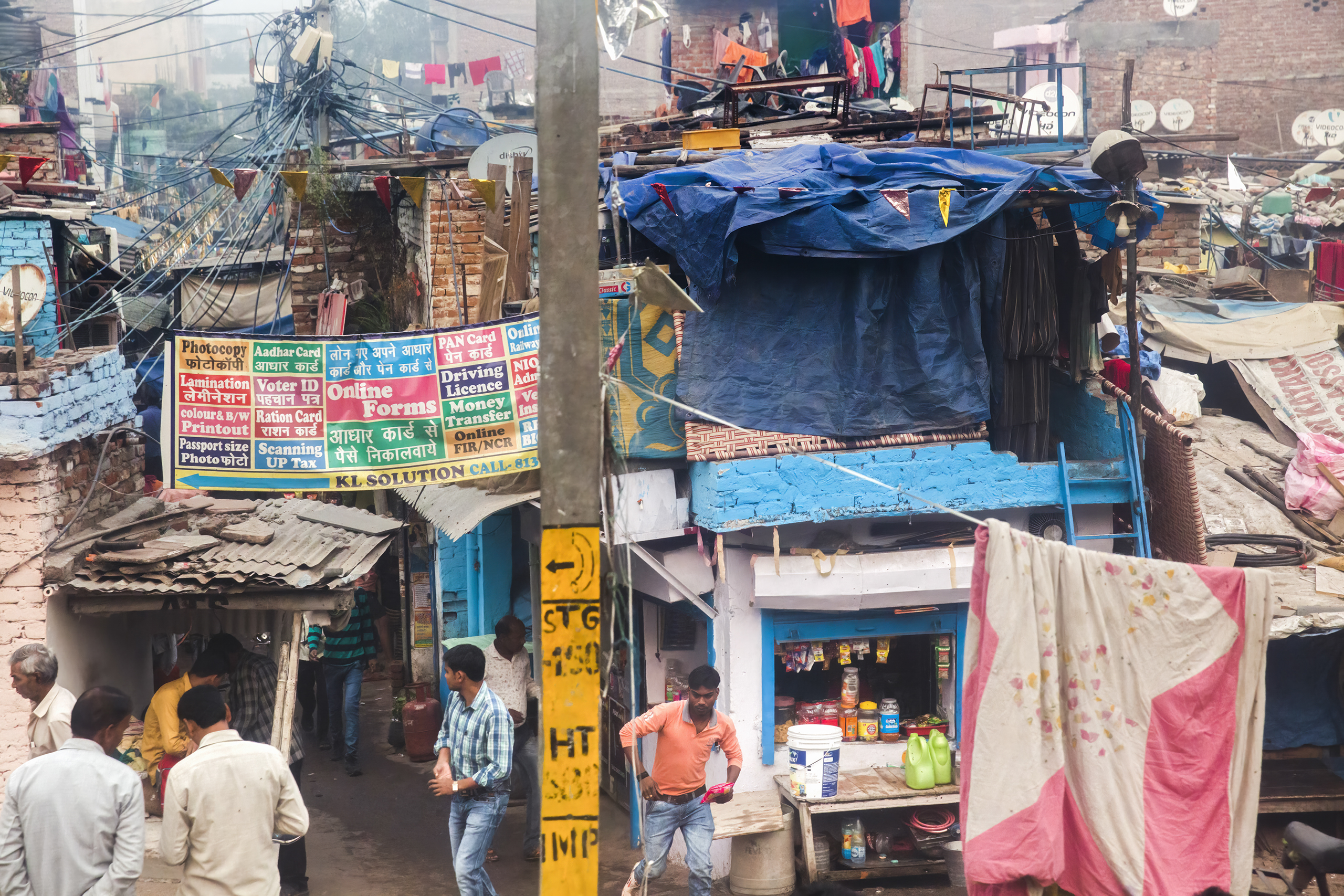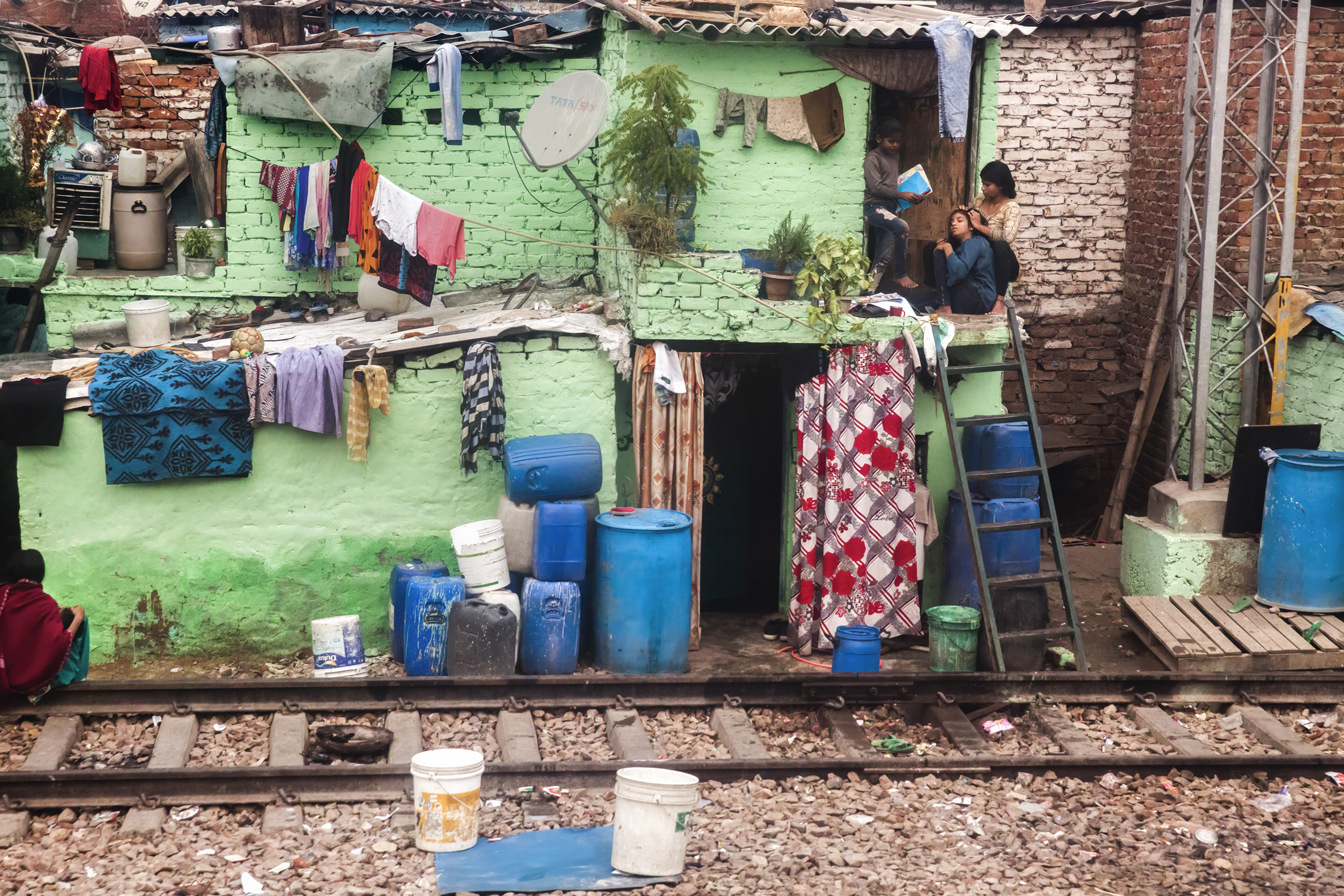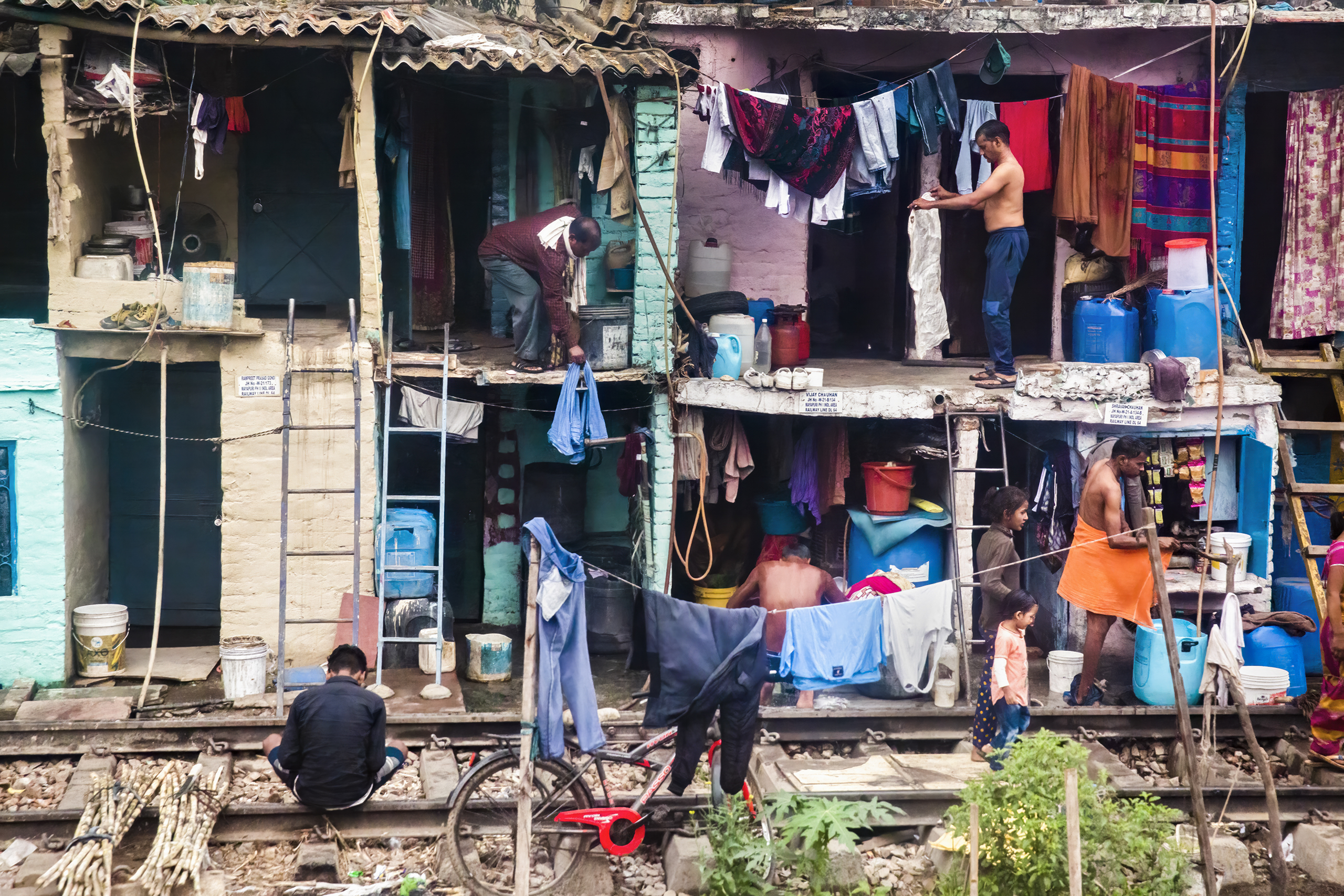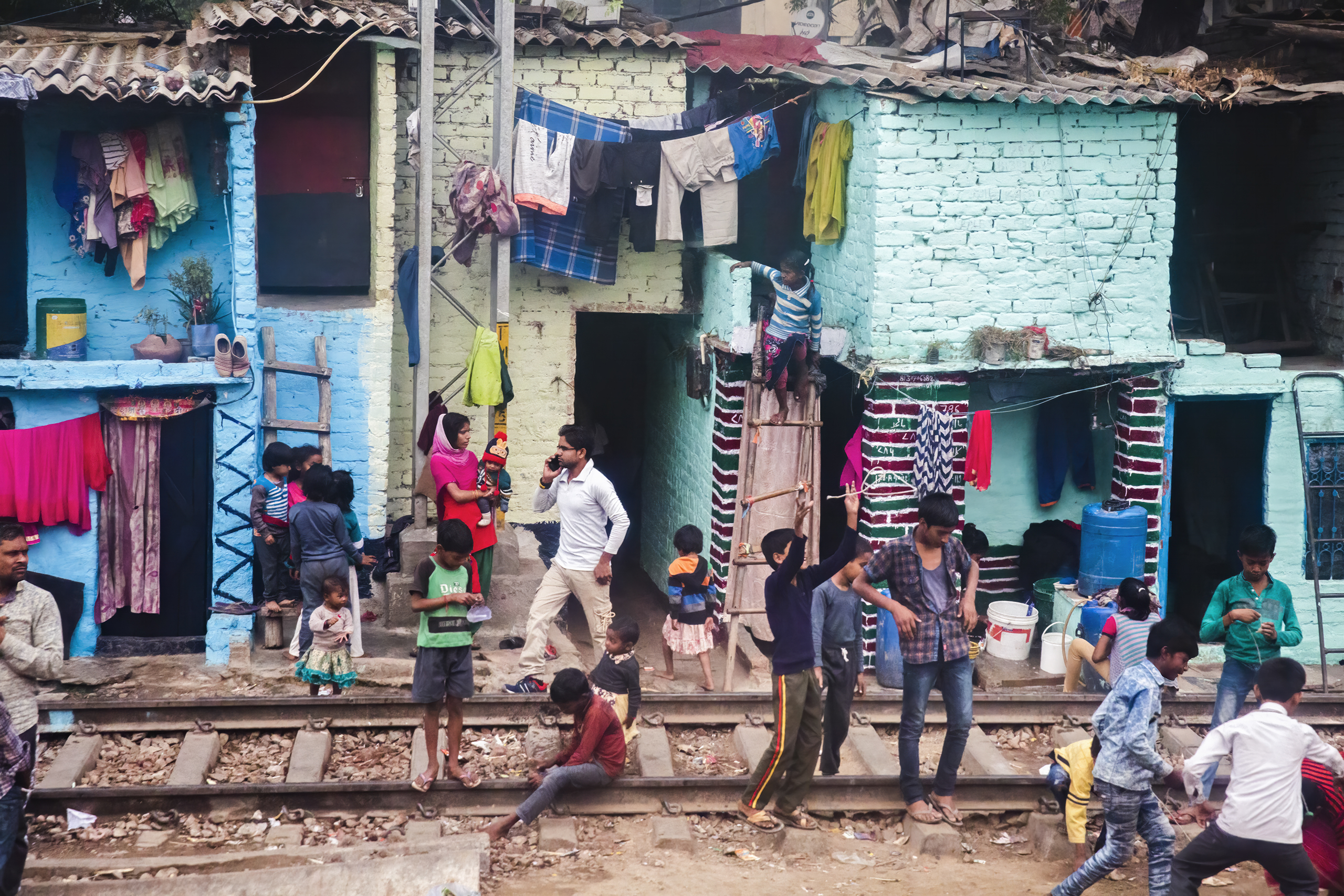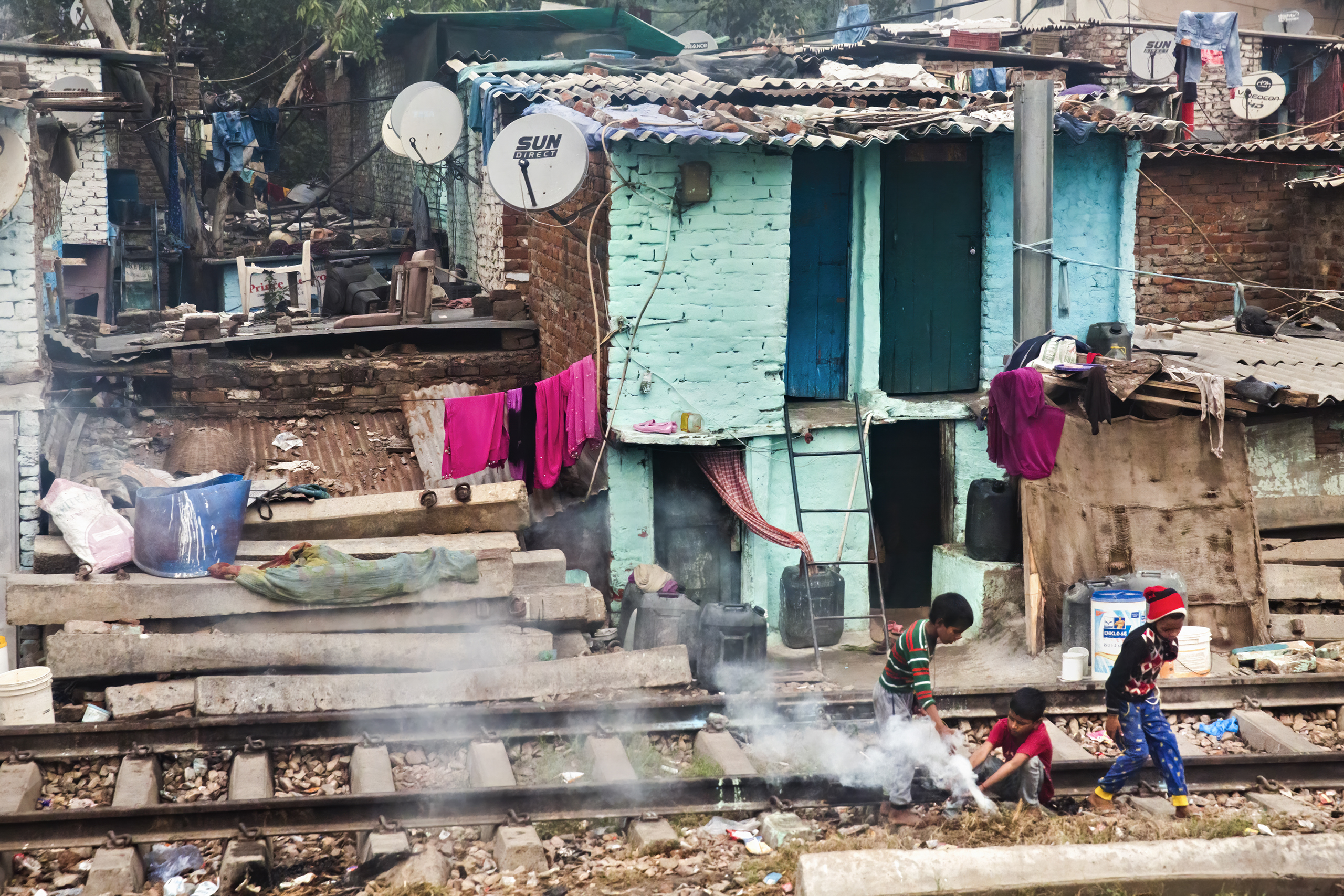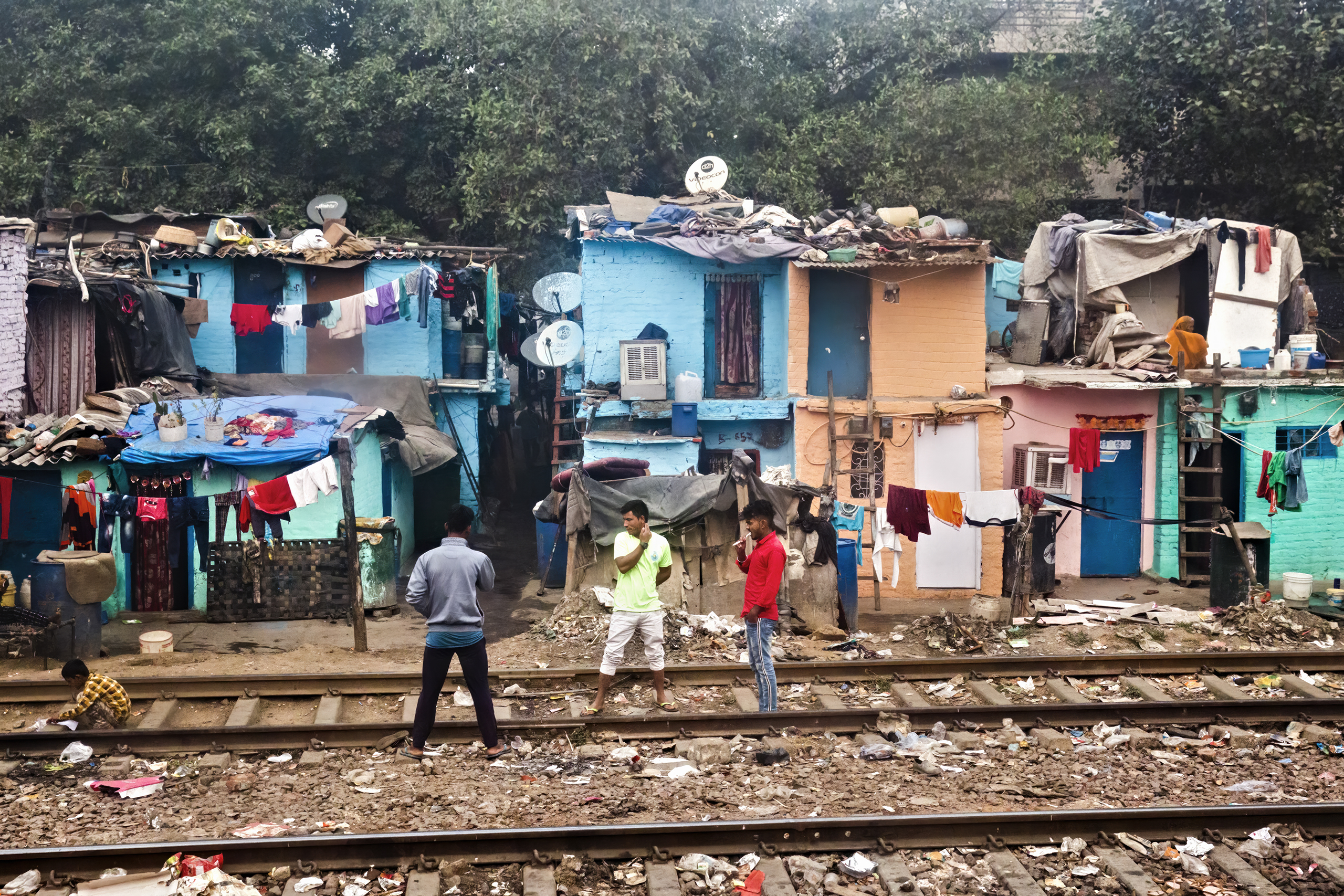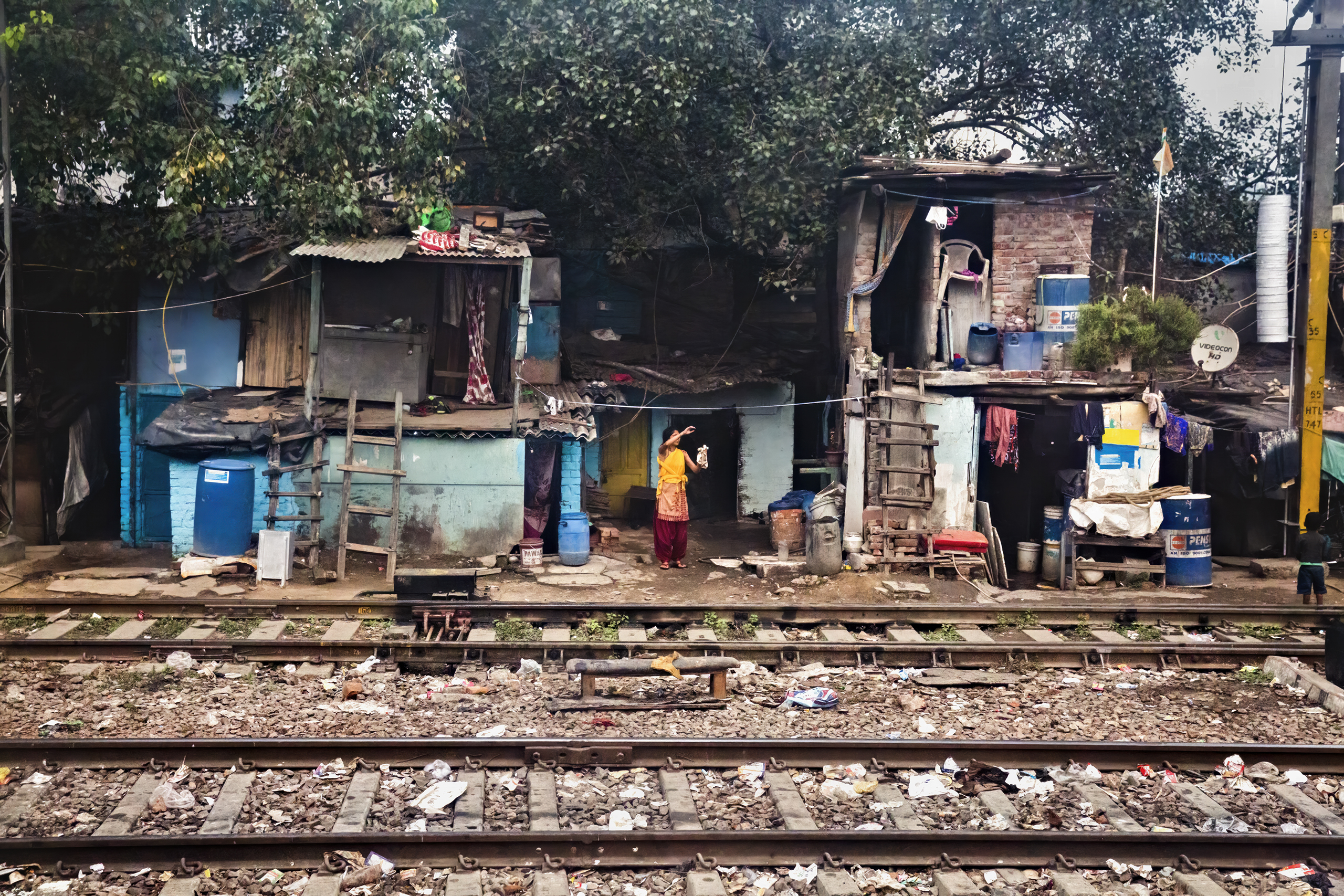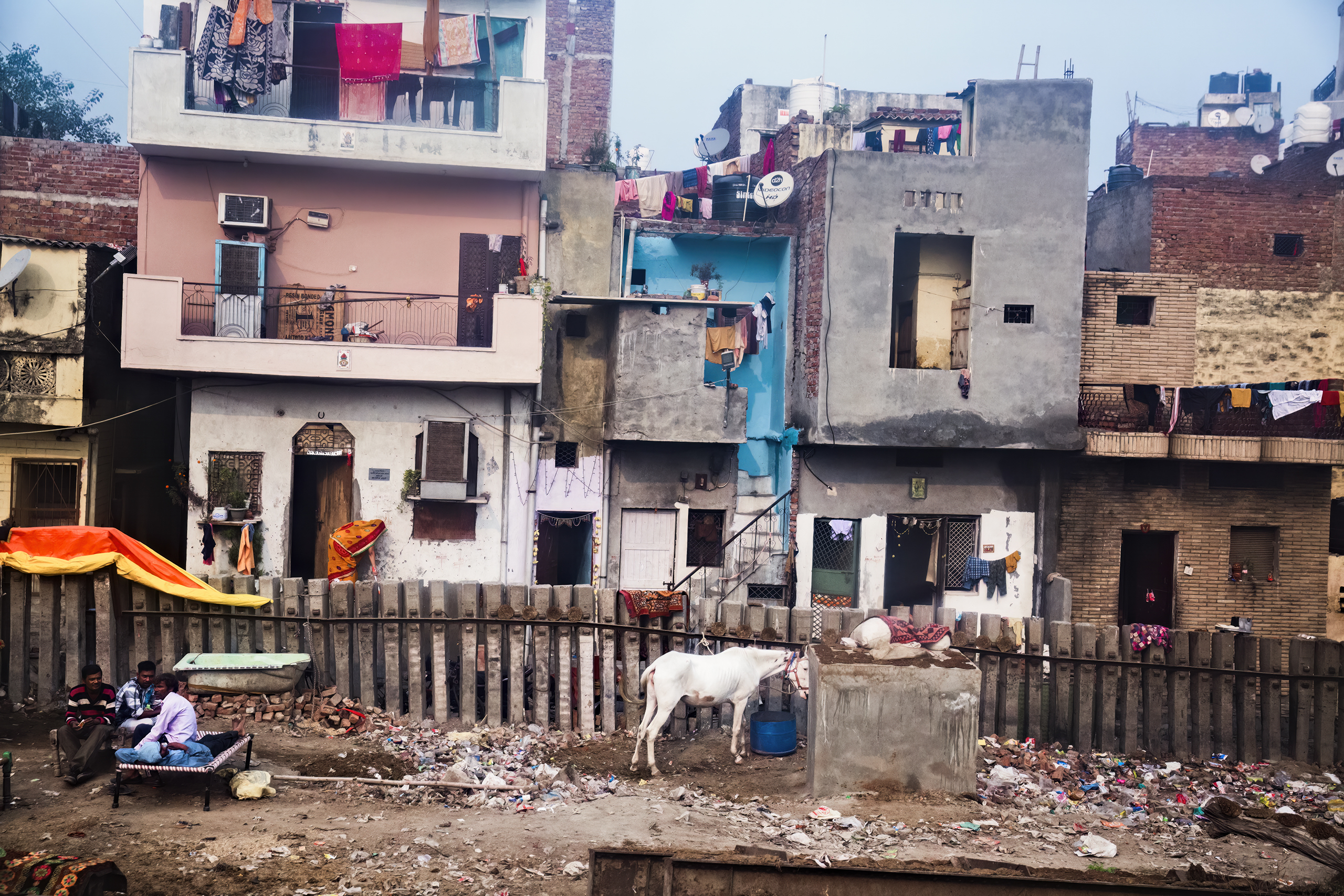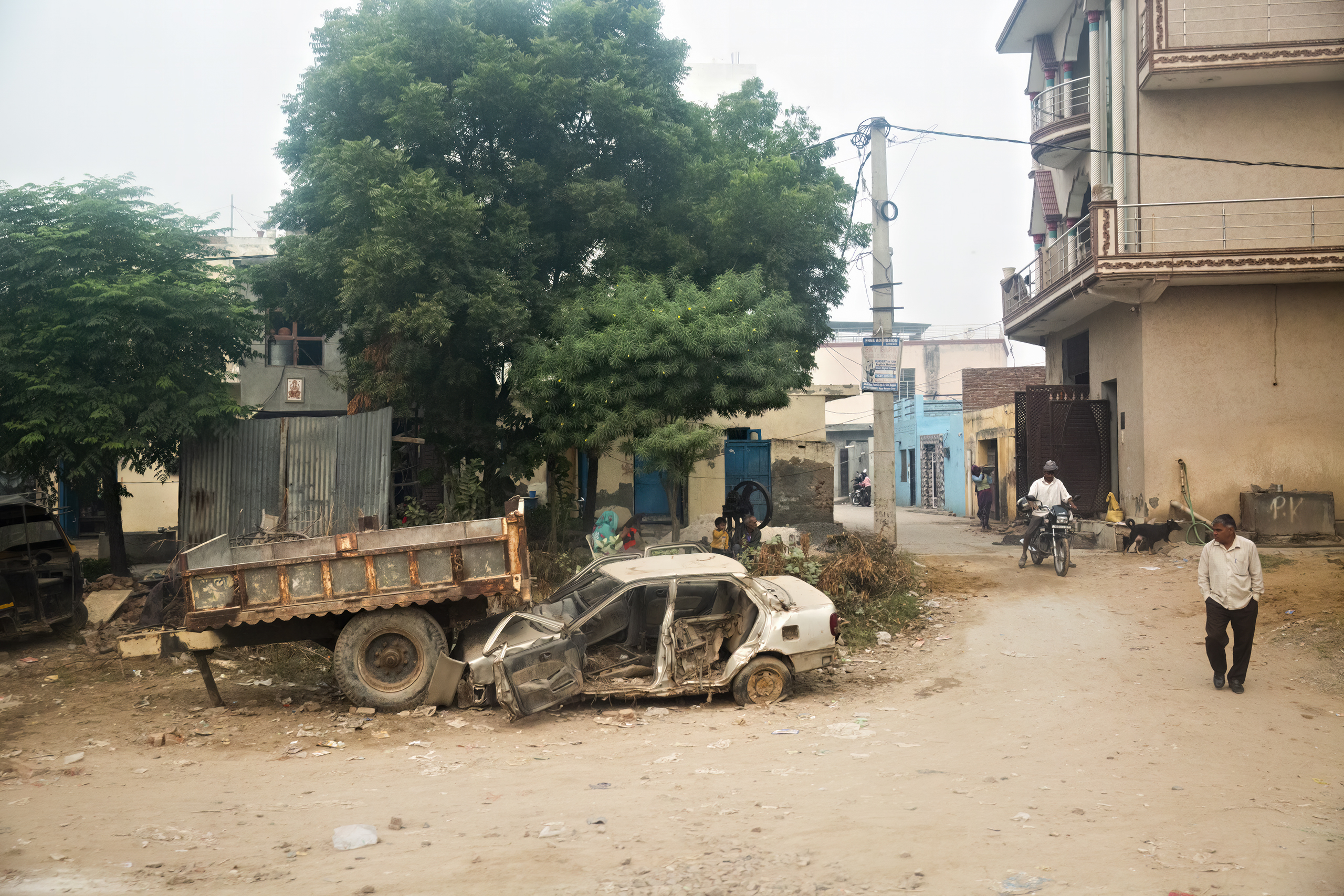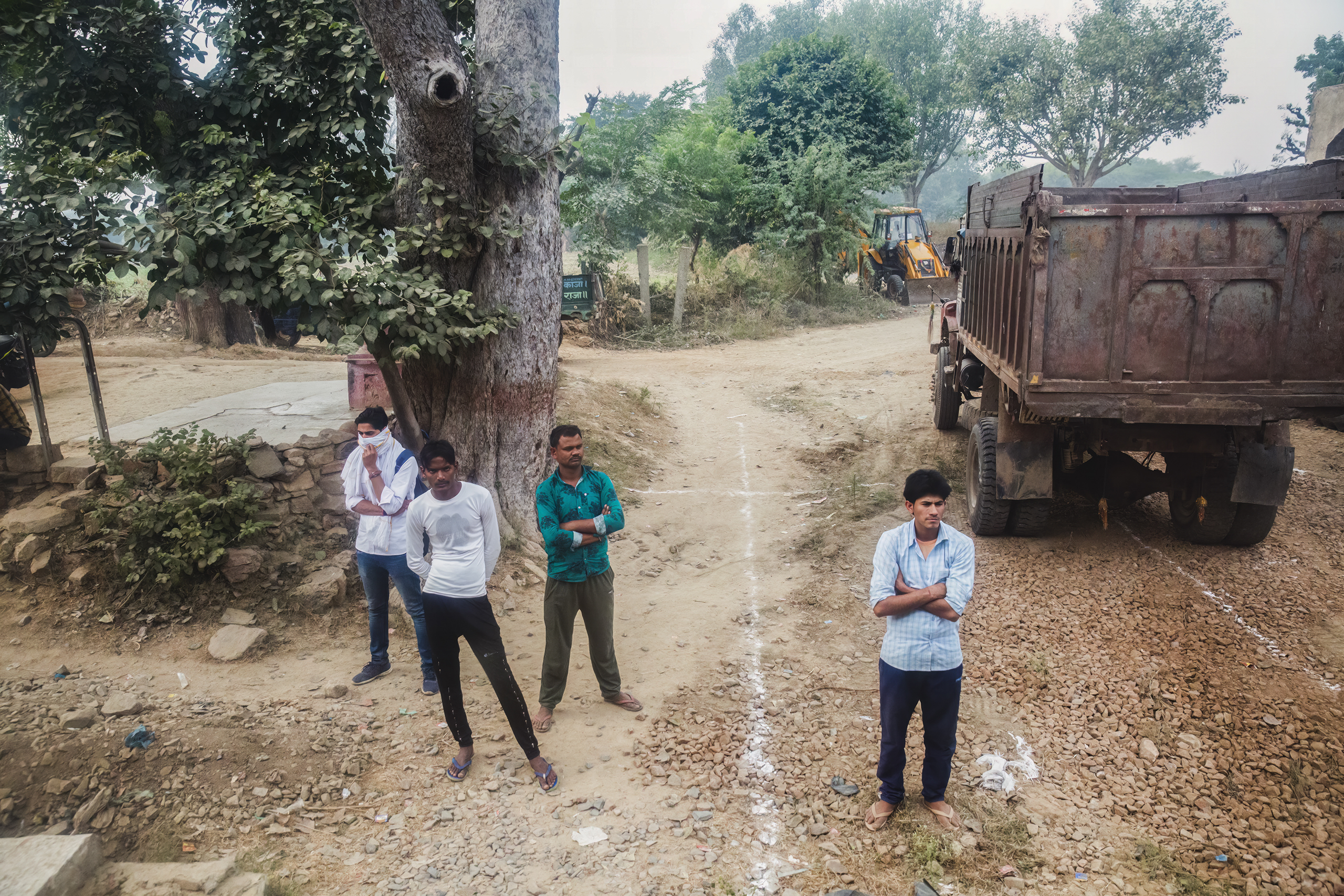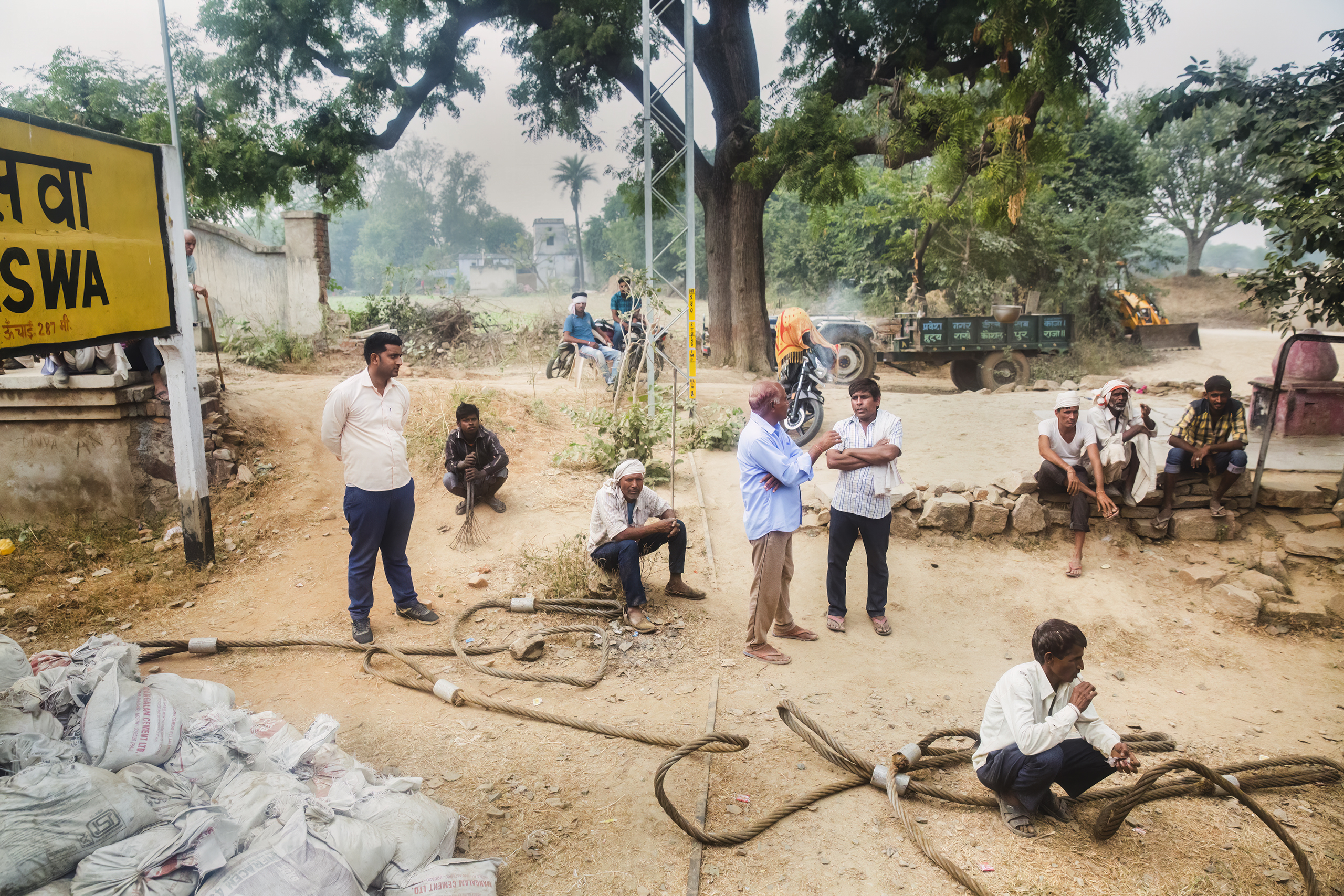
What will
drive AC
adoption
and use in
the coming
years?
Reasons
Income and climate directly influence people's decisions to purchase and use an AC unit. Yet, their role and relative importance vary with socio-economic conditions and across geography, as illustrated by the tale of two regions, Europe and India.
Europe’s current average per capita income is already high enough to make AC affordable for the majority of the population, but moderate ambient temperatures have kept prevalence low. In India, lower average affluence levels prevent most households from being able to afford AC, even though they are exposed to higher temperature and humidity levels. This is why in Europe, richer temperate countries will respond more strongly to increasing temperatures. In India, poorer hotter states will respond more strongly to changes in income.
The increase in both temperature and income can induce two types of adjustments: a more intensive use of already-owned cooling appliances, and a more extensive acquisition of new appliances. In Europe, both adjustments will be relevant, and more ACs will be purchased and also used more intensively. In India, relatively few households possess ACs, so adaptation to rising temperatures is dominated by the purchase of new units.
Notwithstanding the role of socio-economic and climatic conditions, cultural differences act as an additional layer that can lead to very different adoption behaviors across households. Europeans have a lower inclination towards the use of AC (20% of households, on average) compared to countries like the United States (94%), Japan (91%) and Australia (75%).
Developed and developing countries also share some common motivations to consider buying an AC unit and households seem to be equally concerned about the need to protect children in the family. Filippo Pavanello, researcher in climate economics, has shown the positive correlation between minors living in the home and the adoption of ACs. Other common drivers include urbanization and home ownership.
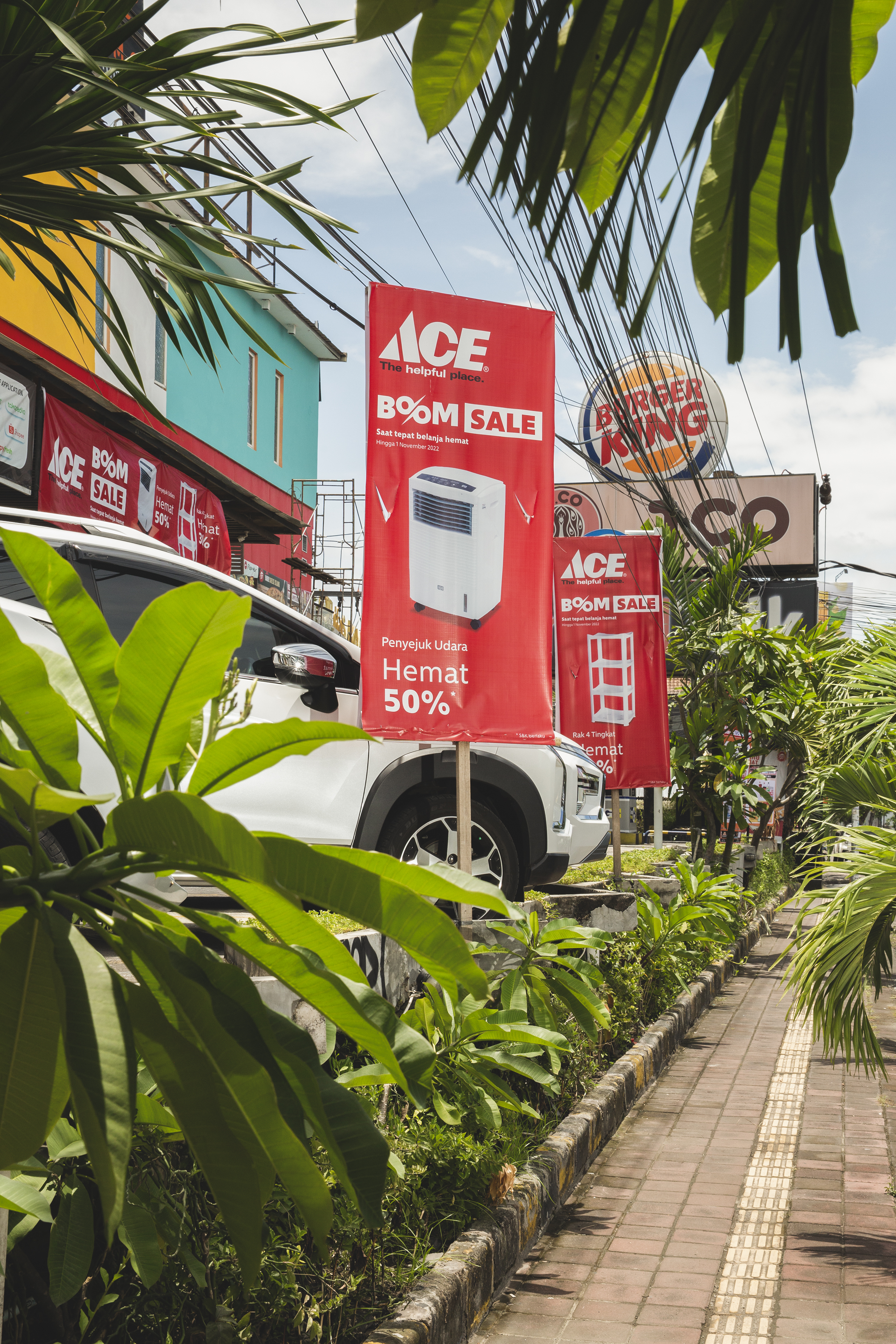
89% 27°C
A banner advertising AC units stands in front of the entrance of a mall in Seminyak. Seminyak is a touristic hub in the south of Bali, where AC is ubiquitous. Indonesia, 2022

77% 26°C
People stand in the streets of the fishing village of Worli, overlooking the residential buildings of Mahim, now a wealthy area of Mumbai. India, 2019
AC adoption will skyrocket over the next 30 years, leading to AC units installed in over 37% of households in Brazil, India and Indonesia.
In developing countries, demographic and infrastructural characteristics are also important factors in explaining AC adoption patterns. For instance, larger families struggle more to acquire ACs compared to smaller households. The ones with senior residents also seem to have a higher propensity in acquiring ACs, most likely to keep them comfortable in their older age.
Findings on gender influences are mixed, but male heads are more inclined to purchase AC, in both developing countries, like Brazil, and developed ones, like Italy. Social status plays a role in countries with poorer economies as housing conditions and education are important drivers. This can also be an indicator in understanding gender roles.
All these factors, together with income and rising temperatures, interact to determine an increase in the future adoption of AC that varies significantly across countries and income groups. The share of AC will reach 55% in India, 41% in Brazil and 37% in Indonesia. This will also lead to an increase in average household electricity consumption of about 10%, from 1,394 to approximately 1,531 kilowatt-hours per year.

74% 28°C
Cantagalo favela expands on one of the hills behind Copacabana in Rio de Janeiro, where touristic and residential buildings with individual AC units are very common. Brazil, 2022
AC adoption by income group today and in 2050
In the top 10% of the income distribution, about 80% of households will have an AC unit in 2050, and will consume about 4 times more electricity than they do today.
- Today
- 2050
Higher Social Class
India
- 35%
- +51%
Indonesia
- 41%
- +55%
Italy
- 60%
- +20%
Brazil
- 73%
- +27%
Middle Social Class
India
- 8%
- +50%
Indonesia
- 2%
- +35%
Italy
- 36%
- +22%
Brazil
- 24%
- +53%
Lower Social Class
India
- 2%
- +21%
Indonesia
- 0%
- +2%
Italy
- 11%
- +22%
Brazil
- 6%
- +15%
The poorest households in India tend to purchase fans before they purchase refrigerators.
An informal settlement, south-west of Delhi, is seen from the train to Jaipur. While in Brazil and Indonesia, refrigerators are among the energy-using appliances that poor households acquire as soon as they have a connection to the grid, this is not the case in some parts of India. In the north-eastern states of West Bengal, Assam, Uttar Pradesh, and Orissa, households are mostly rural and often lack stable access to electricity. When income allows they prefer to acquire fans, which consume less and do not require a stable connection.
Vera Lucia de Moura, 68, lives in a nice little apartment with a large terrace in a favela located in the neighborhood of Santa Teresa in Rio de Janeiro. All windows are constantly wide open to let refreshing air filter in. Vera Lucia says she suffers a lot from the heat, and that she becomes nervous when it's too hot. So she widely uses the pool in the terrace, at least three times a day during hot days, which according to her memories have been increasing a lot lately. She then uses the same water for cleaning or for the plants. She lives with three other family members: her grandson, his wife, and their son, all sleeping in the living room. She keeps one very efficient fan per room to keep cool during the night. She recalls that the first fan she was able to afford was when she started working, at the age of 19. Today, she would love to have an AC and would even be able to afford the costs of its purchase, but paying the energy expenses for running would get too expensive, so “I’ll stick to the fans… and the pool!”.
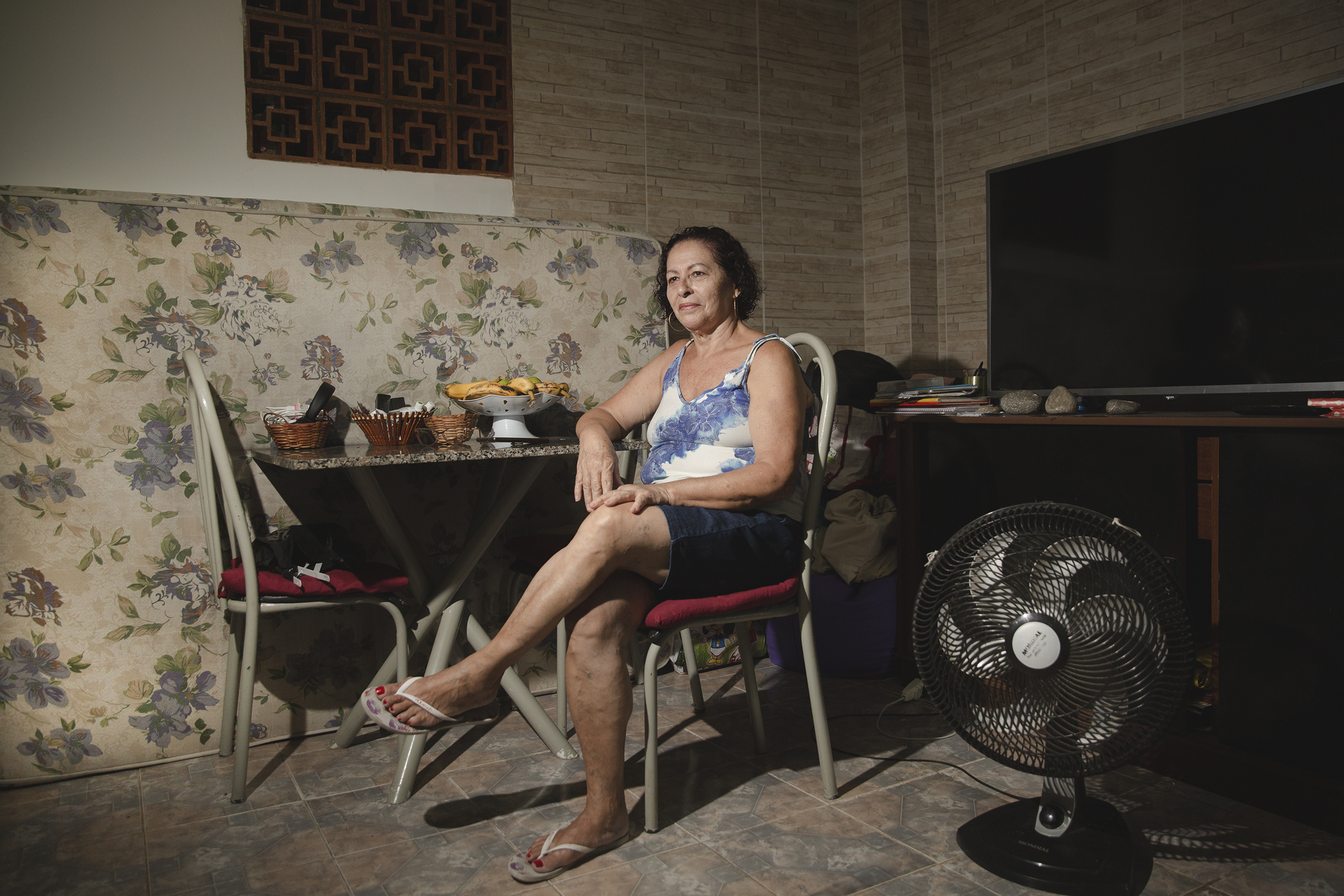
Vera Lucia, Brazil
51% 32°C
Guthembergo and his daughter Lidia Cristina shower at their home in Ocupação Dandara, in the outskirts of Rio de Janeiro. The area is home to an illegal occupation which started in 2020 following the economic crisis due to the pandemic. The inhabitants don’t have the right to build permanent houses, so most of them are made of wood and metal sheets resulting in a daunting heat inside the houses. All of the inhabitants possess fans but with temperatures rising routinely above 40 degrees Celsius inside the barracks, they simply avoid staying home in the hotter hours, while they mainly rely on frequent showers to keep themselves cool during the summer season. Water, however, is not drinkable and therefore water-based cooling strategies in these communities often cause other health issues.
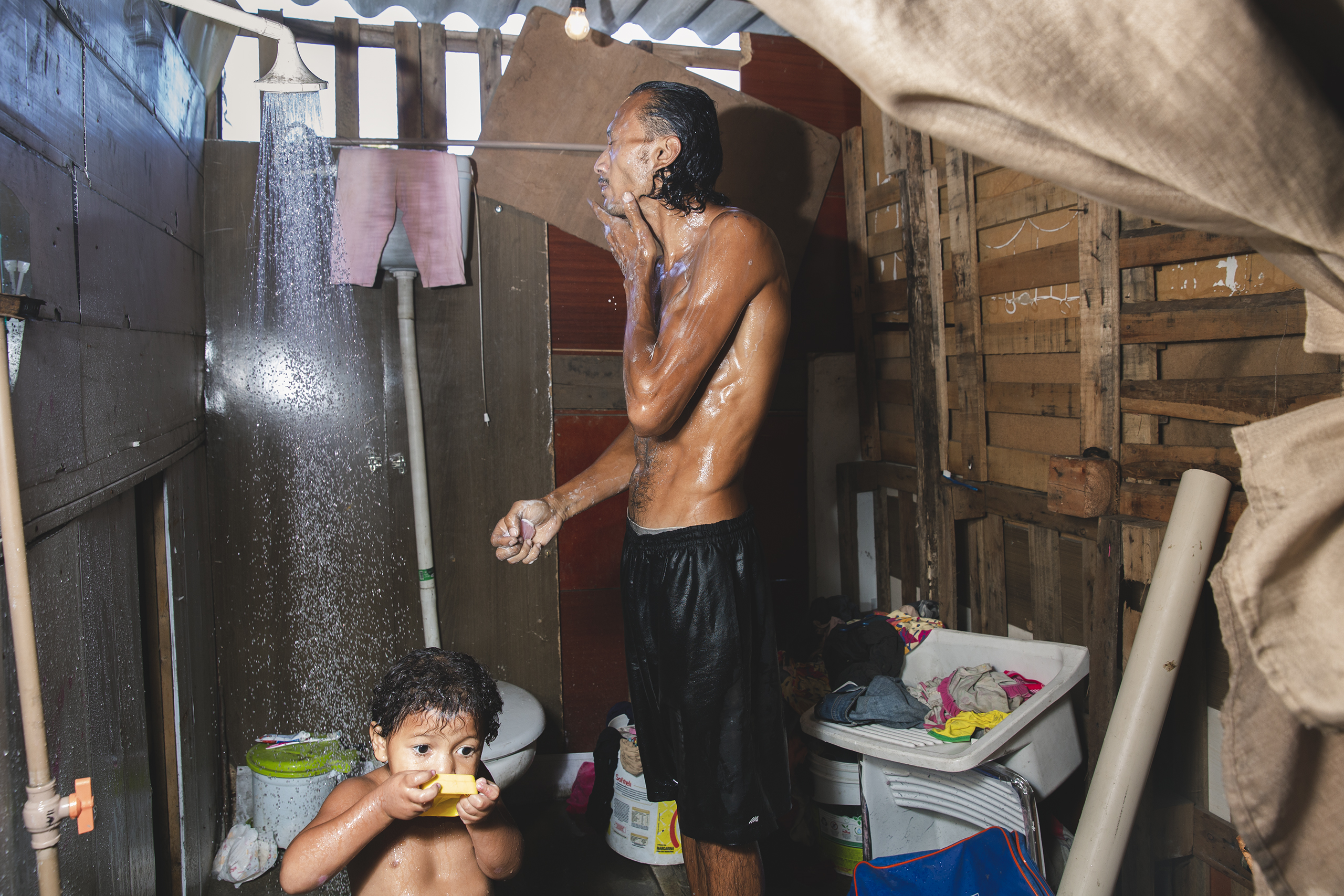
Guthembergo and Lidia, Brazil
55% 31°C
AC is expected to be a major strategy for adapting to climate change, even in temperate developed countries, where AC use has traditionally been low.
In developed countries, the trend of AC adoption will be shaped by the occurrence of more frequent hot days, as well as by rapid urbanization.
Beyond these factors, demographics, home ownership, household characteristics and wealth will all play a major role in this growing trend. Families with a high number of appliances in general also tend to have a higher propensity for AC, suggesting that those used to higher standards of comfort are also more inclined to adopt AC. Households that report paying particular attention to the environment and are more accustomed to adopting energy-saving behaviors are less likely to adopt AC as a cooling option.
All these factors, including income and rising temperatures, determine an important increase in the future adoption of AC, but its extent varies across countries and income groups. In 30 years from now, Spain will reach 67% and France 28%. Important differences emerge also across the income distribution. In Italy, the bottom 10% of the income population will see their AC adoption rate varying from 11% to 33% while among the richest 10% of the population almost everyone (80%) will adapt to heat at home with the use of AC units.
AC adoption rates have started to increase in developed countries as well, and so has electricity use for space cooling. In Italy, the average electricity use per household is expected to increase from 600 kilowatt-hours today to almost 800 in 2050. In France and Spain, these figures are larger and will vary from about 1,400 today to 1,800 kilowatt-hours in 2050.
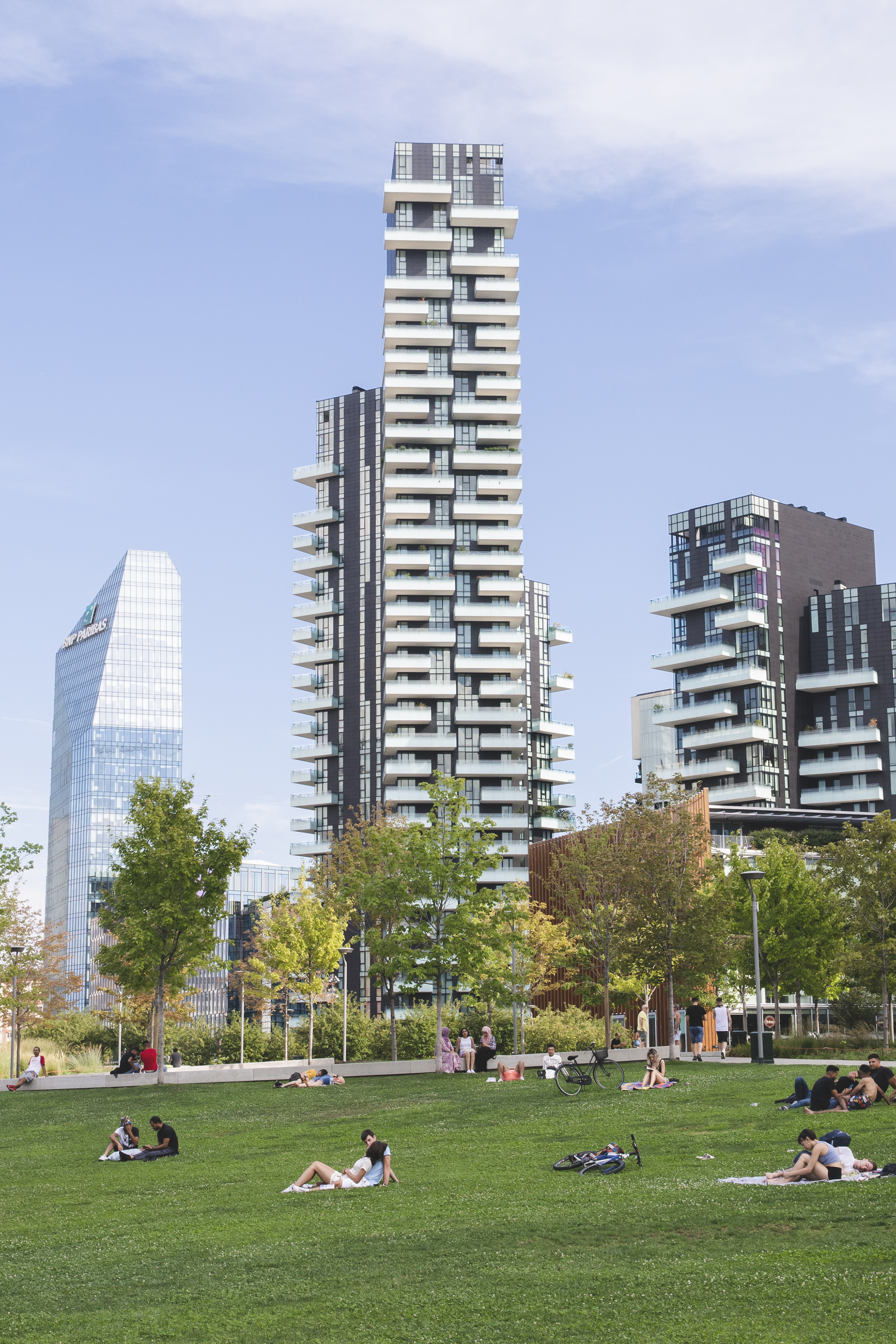
38% 35°C
People seek relief during a heatwave at the BAM Tree Library, a green area in the financial district of Milan. Italy, 2022
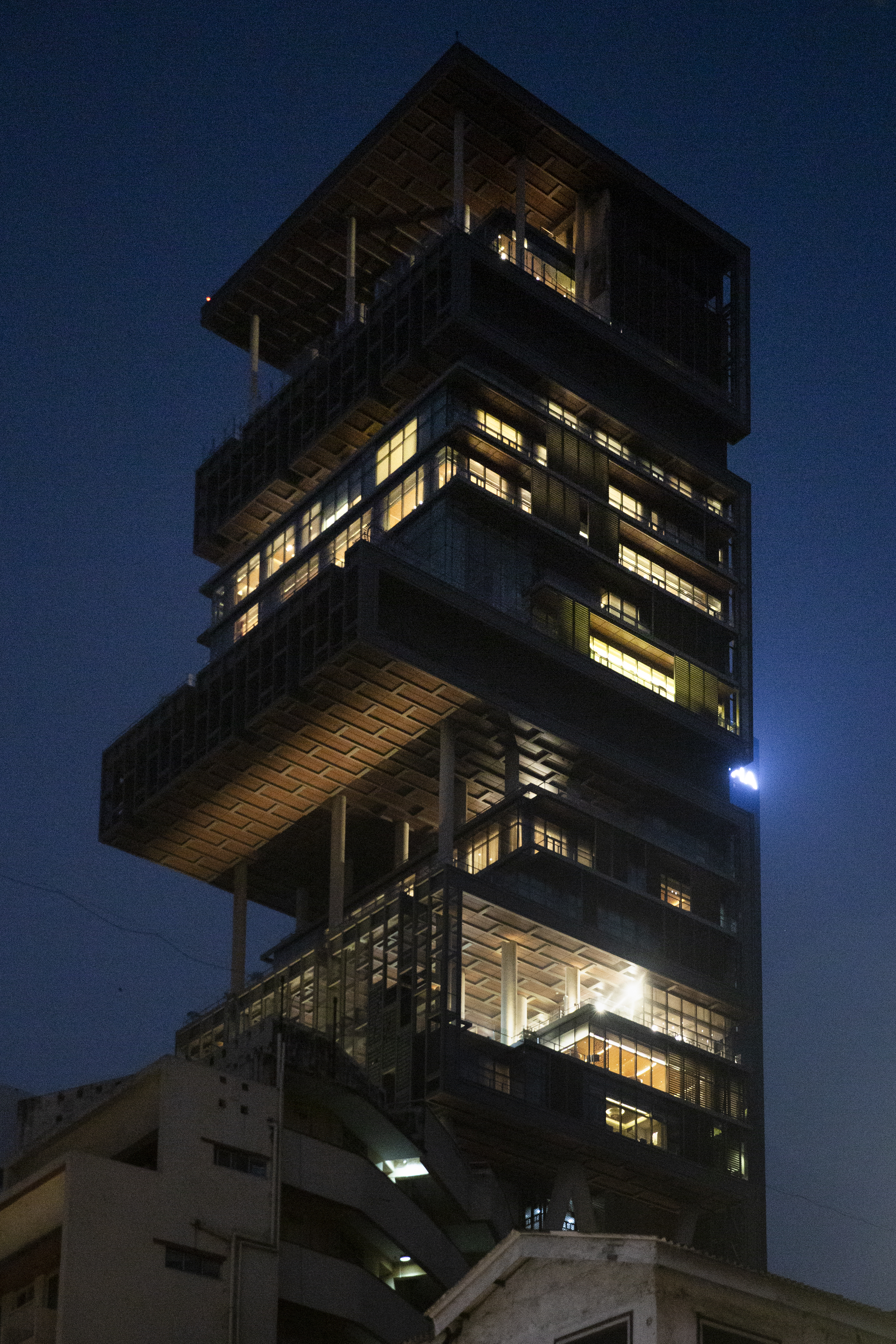 >
>
78% 28°C
Antilia is the most expensive residential building in Mumbai, India, home to the billionaire mogul Mukesh Ambani and his family. India, 2019
When considering the upper classes of Brazil, India and Indonesia's households, AC adoption approaches 100%. The related AC use in these households can exceed 5,000 kilowatt-hours per year, equivalent to the total electricity consumed by an average Italian family.

60% 30°C
A worker rests on the cover-cooled, air-conditioned set of a Bollywood TV series in the north of Mumbai. India, 2019

91% 25°C
Fireworks explode in Central Jakarta, a high-middle-class residential area. Jakarta, with just 32% of houses equipped with AC, exhibits the highest rates of the whole country. Indonesia, 2022

40% 22°C
Men in suits drink and watch a football match on a smartphone during a summer wedding held outdoors in Santa Margherita Ligure. Italy, 2021
AC adoption in households today and in 2050
- Today
- 2050
Cyprus
- 83%
- +16%
Malta
- 59%
- +26%
Greece
- 81%
- +9%
Spain
- 54%
- +13%
Italy
- 39%
- +28%
Croatia
- 31%
- +17%
France
- 14%
- +14%
Netherlands
- 11%
- +14%

63% 26°C
Tourists photograph the sunset in the direction of the statue of Christ the Redeemer, from the Pão de Azúcar hill in Rio de Janeiro. Brazil, 2022
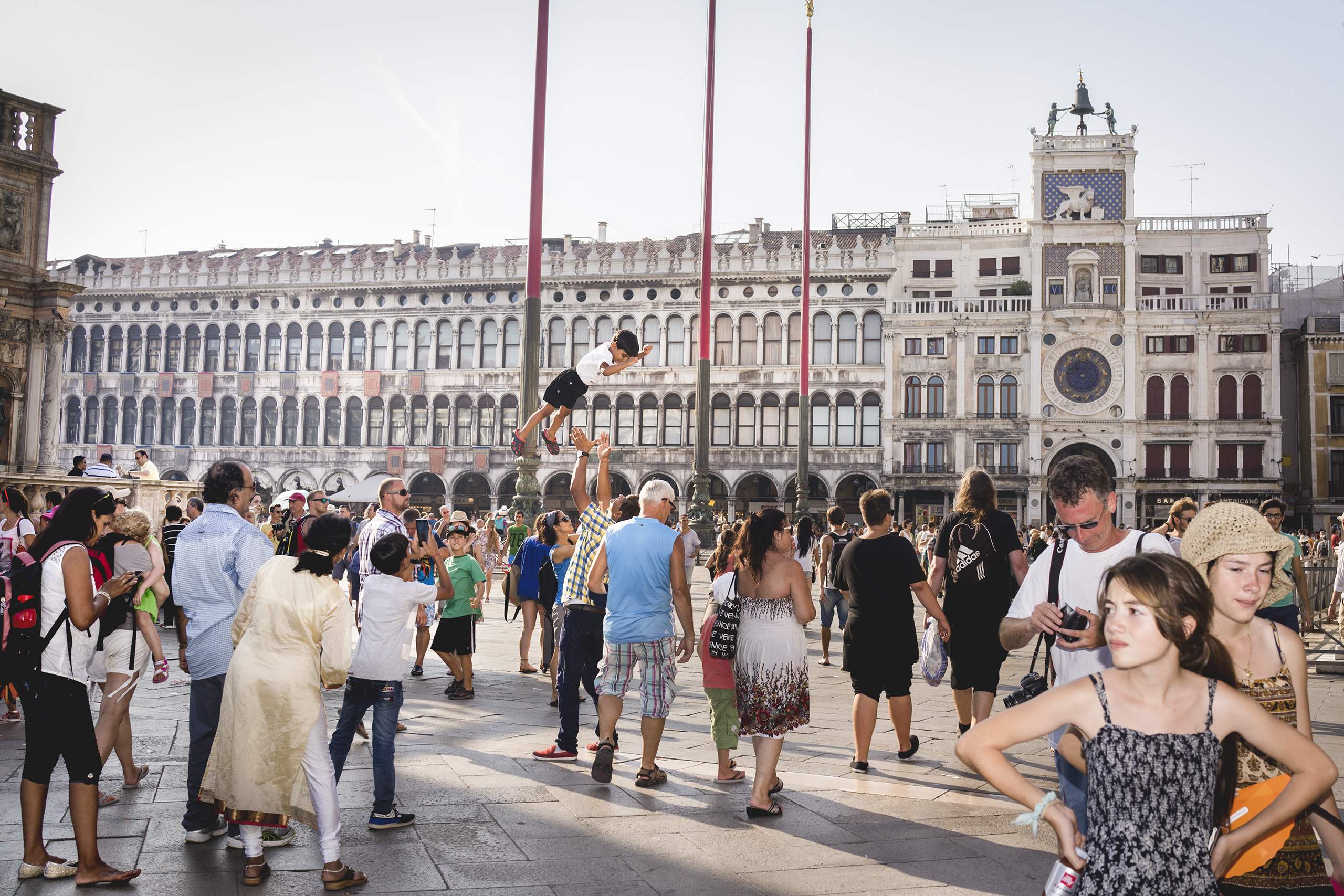
60% 31°C
Tourists take over San Marco square during the traditional Festa del Redentore in Venice. The offer of residential apartments for short stays is one of the main drivers of AC adoption in touristic cities. Italy, 2015

85% 25°C
Beachgoers enjoy the sunset on the beach of Ipanema. The neighborhood of Leblon, in the background, is the most affluent one in Rio de Janeiro. On the hill behind is the favela Vidigal. Brazil, 2022
Talita Borges Cruz, 32, energy planning researcher, and her husband Alexandre Tavares, 31, petroleum engineer, pose for a portrait at their apartment in the Copacabana neighborhood of Rio de Janeiro. “I clearly recall the joy of getting my first AC when I was 17, as I was the only one in my house to have AC! It was a present from my grandmother, because she got a new one for herself. Today, I try to use AC as little as possible because I am concerned about its impacts on climate change, but I also think it’s too expensive and I prefer to spend my money on other things. However, now that I am pregnant, I suffer from the heat more. I get dizzy when it's too hot, because of low blood pressure, and I need to take some energizers. I also have to say it’s the first thing we are going to buy for the kid’s room, because many friends told me the baby would not sleep well otherwise on hot nights. At the same time we live in a hot climate, we’re partly used to it, and I’d like my baby to get acclimated to it too, as much as possible".

Talita and Alexandre, Brazil
66% 30°C
Marisa Vesco, 85, showers with help from her daughter Chiara at her apartment in Cossato, Italy. Marisa has been diagnosed with incurable liver cancer, and while throughout her life she has been sensitive to cold weather more than heat, her condition makes her especially vulnerable on hot days. Marisa can still stand and walk with a stick, but this requires a lot of energy, so she spends most of her time in bed reading or watching television. Her apartment has no AC, so her family uses a fan to help her stand the heat during the summer. Thermal comfort also depends on thermal sensitivity, and elderly people with pre-existing health conditions have a lower capacity to thermo-regulate their body.

